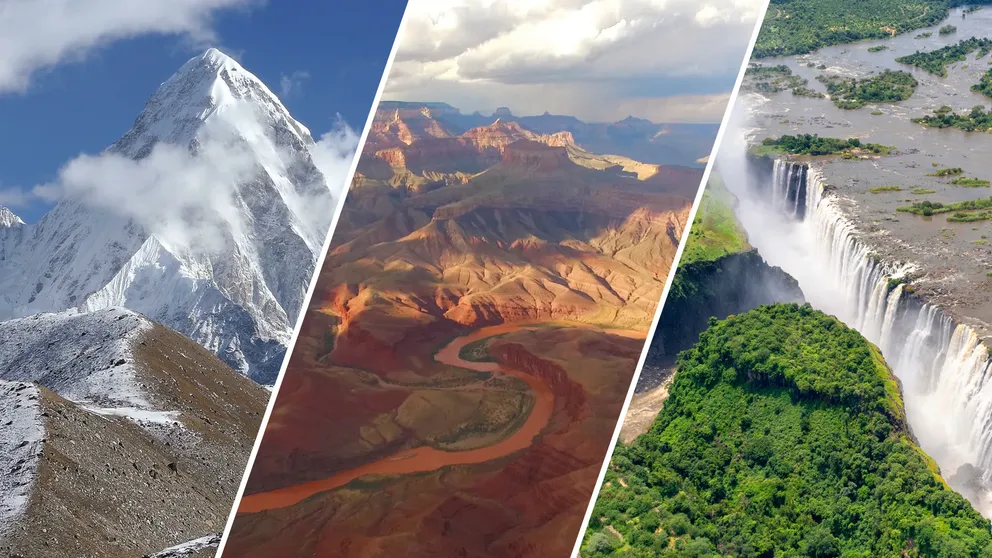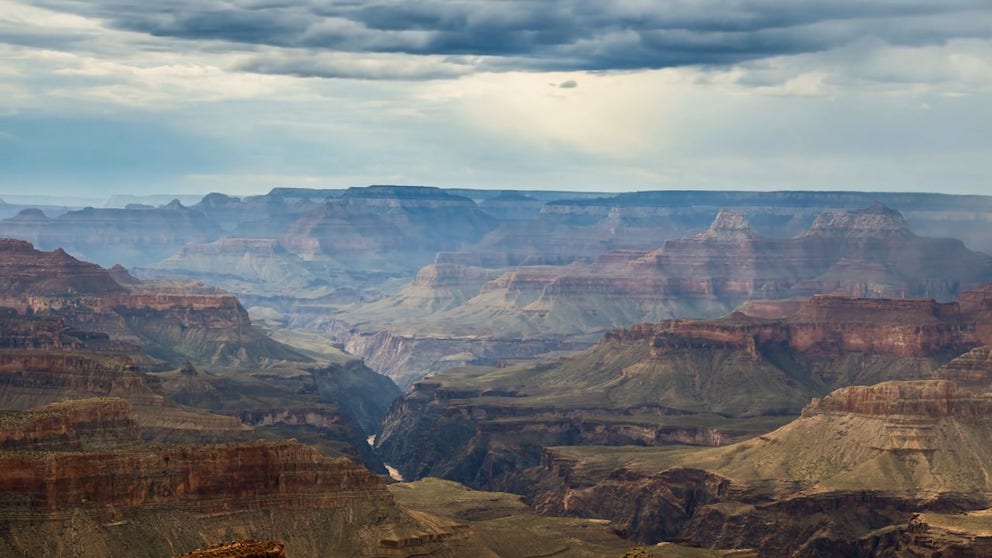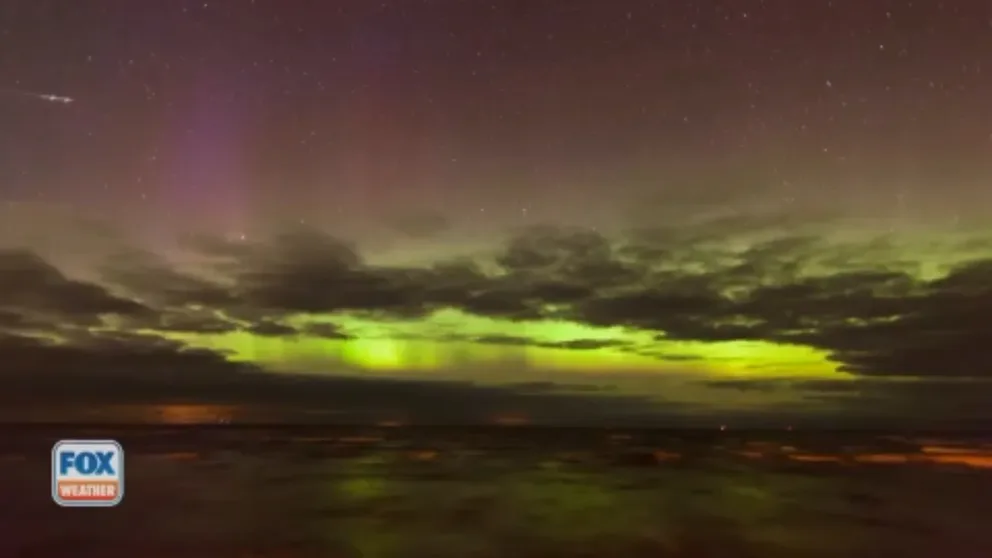Can you name all 7 Natural Wonders of the World?
Calling all travel aficionados with a bucket list. Do you know what the 7 Natural Wonders of the World are? They have all been carved and crafted over geologic time by heat, pressure, water, wind and force.
Can you name the 7 Natural Wonders of the World?
From the Earth's highest peak to its deepest bay, see why these magnificent locations around the globe are considered the world's seven natural wonders.
FOX Weather is taking you on a vacation around the world to the most awe-inspiring natural wonders. If you love to travel and are looking for bucket list ideas or just want to be amazed by nature, this trip won't take days on planes, and no ticket is required.
There are several lists of the 'Seven Wonders', but popular opinion points to Greek historian Herodotus in the fifth century writing the original, according to the State University of New York at Albany. He listed the 7 wonders of the ancient world for travelers.
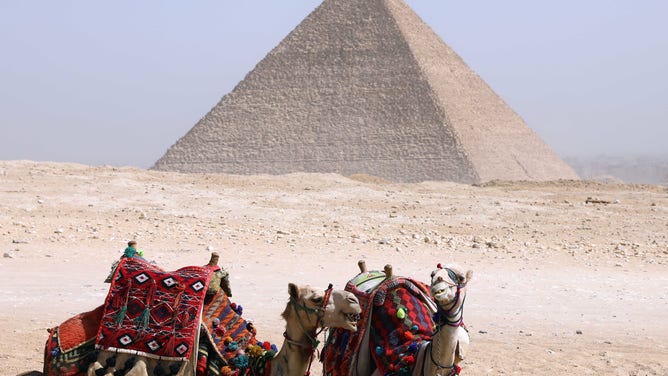
The Great Pyramid is the only wonder of the ancient world that still exists.
(Ahmed Gomaa/Xinhua / Getty Images)
George Washington University's History News Network points to second-century poet Antipater of Sidon, who wrote the list as a travel guide.
Since then, several lists have been compiled by non-profit organizations, travel writers, marketers and more. The first list of Seven Natural Wonders was published in 1997, according to the travel experts writing Brush Buck Wildlife Tours website.
In 2008, a non-profit group called Seven Natural Wonders formed and assembled a panel of nature photographers, teachers, travel writers, environmentalists, naturalists, and sustainability experts to establish this list.
"Seven Natural Wonders is a global grassroots endeavor committed to protecting the natural wonders of the world," reads their mission statement. "The mission is to help people discover and explore the natural wonders of the world, to teach them about the wonders and the things that threaten their existence, and to inspire them to create a philosophy and practice of conservation.
The Seven Natural Wonders of the World
Mount Everest
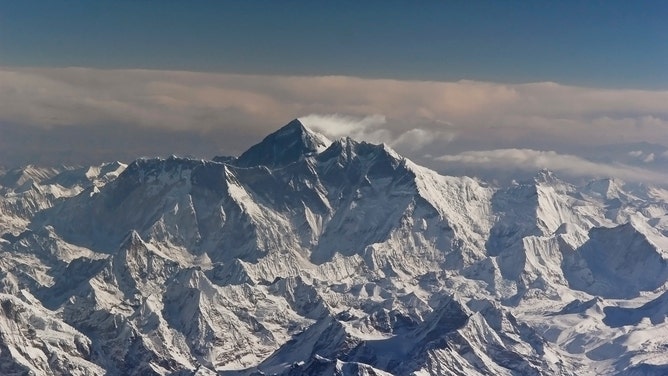
The summit is always snowcapped.
(Anthony Asael/Art in All of Us / / Getty Images)
The highest peak in the world, at 29,029 feet or 5-and-a-half miles high, is in the Himalayan Mountain Range in Nepal and Tibet. Hawaii's Mauna Kea is actually taller, but much of it is underwater, so it is not the tallest peak above sea level, according to WorldAtlas.
Between 40 and 50 million years ago, the Indian continental plate rammed the Eurasian Plate at the breakneck speed of 30 feet per century, according to the U.S. Geological Survey. Since both masses were the same density, the edges of the plate went skyward instead of overlapping.
The Indian Plate slowed to a mere 15 feet per century, but it is still pushing. So Mount Everest is still getting taller by almost half an inch a year.
The Nepalese call the mountain "Sagarmatha" which means "peak of heaven," according to the Nepal Government.
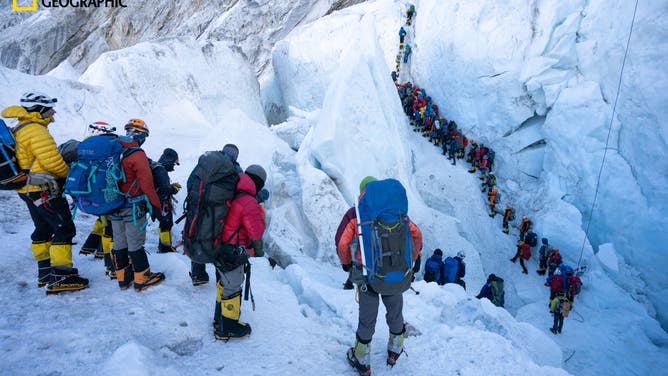
File: Crowds in 2019 climbing Everest.
(2019 National Geographic and Rolex Perpetual Planet Everest Expedition and Eric Daft / FOX Weather)
The summit is sometimes in the subtropical jet stream. About 800 climbers attempt to summit Everest yearly, a National Geographic and Rolex Return to Everest Expedition team member told FOX Weather earlier. The arduous and icy climb through thin air to the summit is one mile but takes 12 hours, on average, reports Brush Buck.
Paricutin Volcano
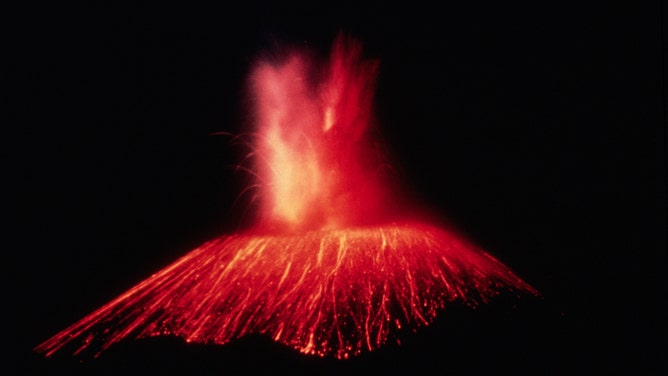
File: Lava erupting from Paricutin.
(CORBIS / Getty Images)
The youngest volcano in the Western Hemisphere is only 200 miles west of Mexico City. It is also the only volcano in history whose lifetime was witnessed by humans.
A farmer noticed an opening in his cornfield in 1943 that soon began spitting hot rocks and dust, according to reports. In just 24 hours, the cone grew to 164 feet. In a week, it was about 550 feet high. Paricutin spit out one billion tons of lava in its 9-year eruption and is now 10,400 feet high.
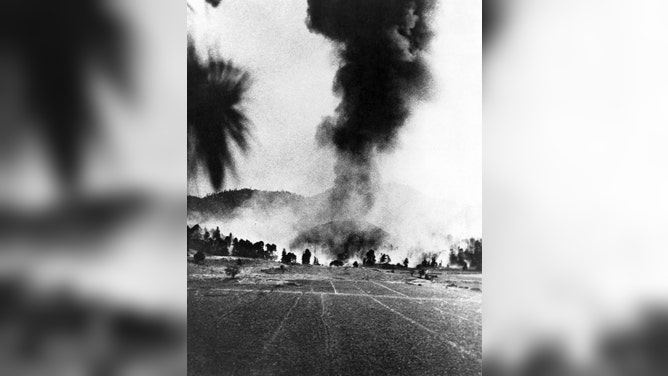
File: The growing volcano in the corn field.
(CORBIS / Getty Images)
The Grand Canyon
The only natural wonder in the U.S. is the Grand Canyon. It is now a National Park and surrounds 277 miles of the Colorado River, and is 18 miles across at its widest. The deepest point is over a mile deep.
The Grand Canyon is not the biggest canyon on Earth. According to NASA, the Yarlung Tsangpo Gorge in Tibet is 3 miles deep in some places and over 300 miles long.
GRAND CANYON NATIONAL PARK OFFERS 277 MILES OF BREATHTAKING VIEWS AND ADRENALINE-PUMPING HIKES
Grand Canyon National Park
Grand Canyon National Park in Arizona features one of the Seven Natural Wonders of the World.
According to the National Park Service, the canyon's formation began almost 2 billion years ago as rocks formed in the inner gorge. Later, between 70 and 30 million years ago, plate tectonics shifted, lifting the area of the Colorado Plateau.
The final piece of the canyon formation came from the Colorado River, which geologists believe has been carving out the canyon for 6 million years.
Victoria Falls
Victoria Falls is the largest curtain of falling water in the world. The Zambezi River on the border between Zambia and Zimbabwe, Africa, feeds the monster. Locals call it Mosi-oa-Tunya, which means "smoke that thunders," according to Britannica .com.
The smoke is actually spray from the falls, which are 5,577 feet long and creates a rain forest on an island in front of the falls. There is an explosion of rainbows in the mist at certain times of the day.
NO GOLDEN TICKET REQUIRED: CHOCOLATE FALLS SURGE AFTER MONSOONAL STORMS
The average flow over the falls is almost half a million gallons per second. The extreme water flow has eroded the earth under the falls causing the face to collapse and the falls to move upstream several times. An astronaut in the International Space Station took a photo of the zigzagging Zambezi that used to be previous locations of the falls.

The positions of the falls are controlled by linear fault lines in the underlying basalt rocks. The falls have moved upstream (bottom to top) by intense river erosion, elongating the zigzag gorge in the process. Prior positions of the strongly linear falls can be detected. The earliest on this cropped view may have been the longest (dashed line). The zigzags represent subsequent positions, all with the characteristic water-worn lip on the upstream side. The falls will continue to erode northward.
(Astronaut Edward Lu / NASA)
In the dry season, the falls can be a trickle.
Guanabara Bay
The harbor of Rio de Janeiro, Brazil, is Guanabara Bay, which is the largest bay in the world based on volume of water. It is 88 miles long.
Rio de Janeiro is Portuguese for "river of January," referring to the summer storms creating massive runoff into rivers. Fifty-five rivers feed the bay, according to a study.
THESE AMERICAN CITIES HAVE SIMILAR WEATHER TO SOME INTERNATIONAL LOCALES
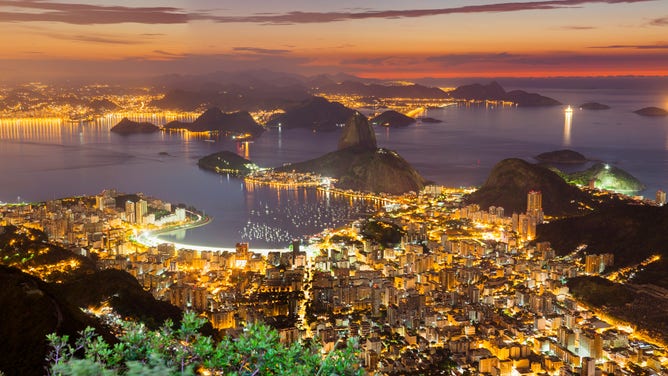
Rio and Guanabara Bay.
(Flavio Veloso/Brazil Photos/LightRocket / Getty Images)
Great Barrier Reef
Australia's Great Barrier Reef is the world's largest living structure and can be seen from space. It stretches for 1,600 miles along the country's northeast coast.
The reef is actually made up of more than 2,500 separate reefs covering 134,000 square miles, according to NASA. There are over 900 islands within the reef.
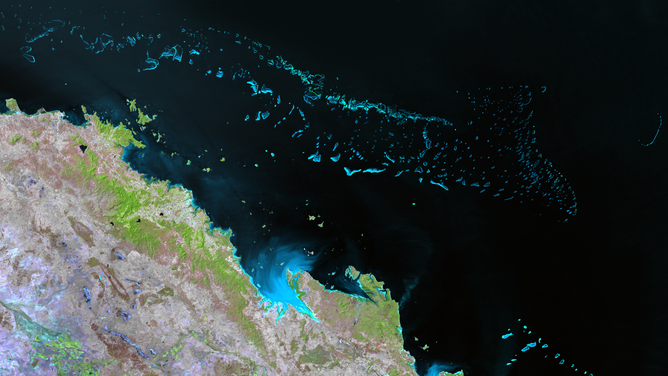
The Great Barrier Reef spanning 1,600 miles along Australia's northeast coast.
(Suomi NPP Satellite / NOAA)
The base of the reef is several hundred thousand years old, while the living section only dates back 10,000 years, according to a study. At times the reef grew vertically 65 feet per thousand years and laterally 5 feet per year.
The reef started growing after the most recent ice age when the sea level was almost 400 feet lower than today, according to the Australian Academy of Science.
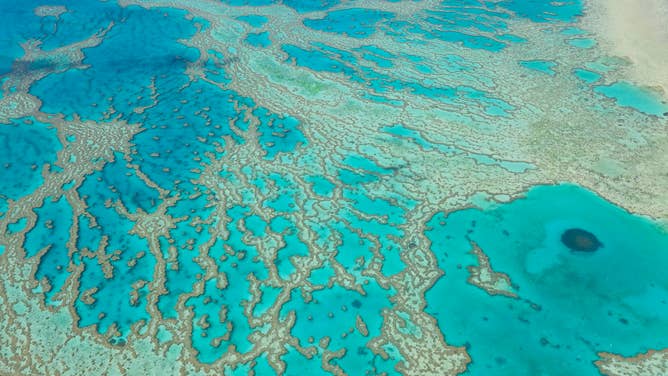
File: An aerial view of part of the reef.
(Peter Adams/Avalon/Universal Images Group / Getty Images)
About 9,000 species of marine life call the reef home. It only covers 0.1% of the Earth's ocean surface but supports 8% of the world's fish species, according to the United Nations Atlas of the Oceans.
Northern Lights
Eerie, beautiful and fleeting; the Northern Lights light up skies in both hemispheres. They are Aurora Borealis in the Northern Hemisphere and Aurora Australis in the Southern Hemisphere.
7 THINGS TO KNOW ABOUT THE NORTHERN LIGHTS
7 Facts about the Northern Lights
Seven facts about how the Northern Lights form and how best to spot them
Vivid Northern Lights displays usually follow a few days after solar events, known as coronal mass ejections or solar flares. The flares bring a barrage of electrons that interact with oxygen and nitrogen in Earth's magnetic field that surrounds the outside of our planet.
"The production of the colors is very similar to what you see in a neon sign," said Don Hampton, a researcher at the University of Alaska, Fairbanks. "It's basically just an electrical current."
SEE THE MYSTERIOUS SWIRLING SPIRAL IN ALASKA'S SKY AMID AURORA BOREALIS
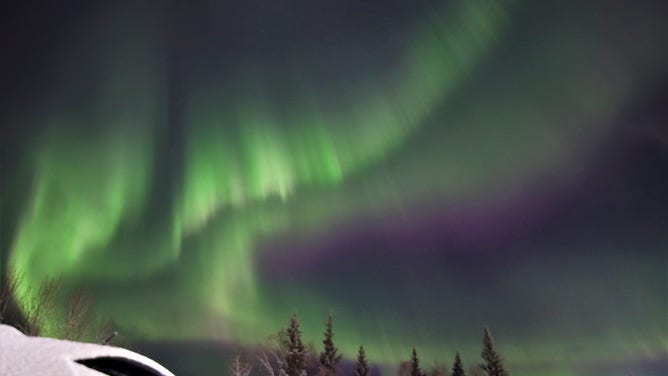
Northern Lights dance over Fairbanks, Alaska on Nov. 3, 2021.
(Rajan Itani / Graduate student, University of Alaska Fairbanks / FOX Weather)
As the electrons hit the oxygen and nitrogen molecules, it "dumps in a little energy," Hampton said. "And then (the molecules) relax back down to ground state. When they do that, they release a little bit of light."
The best chance of seeing the aurora is to head toward the poles, but they have been reported as far south as New Orleans, according to the Northern Lights Centre.
